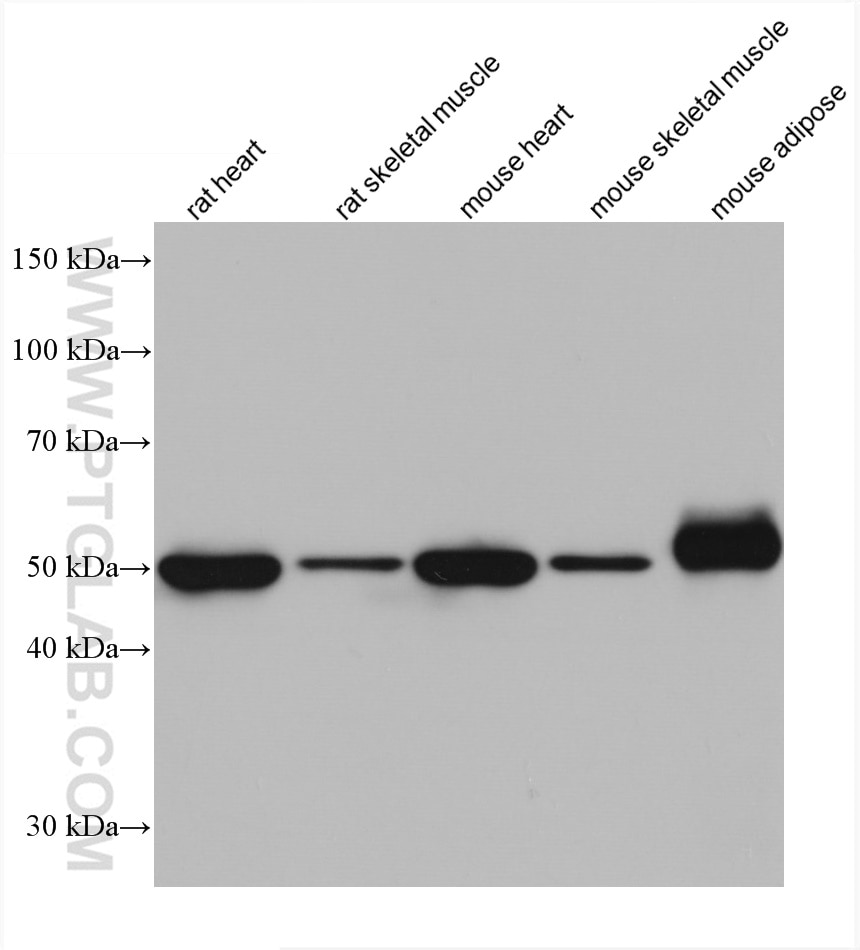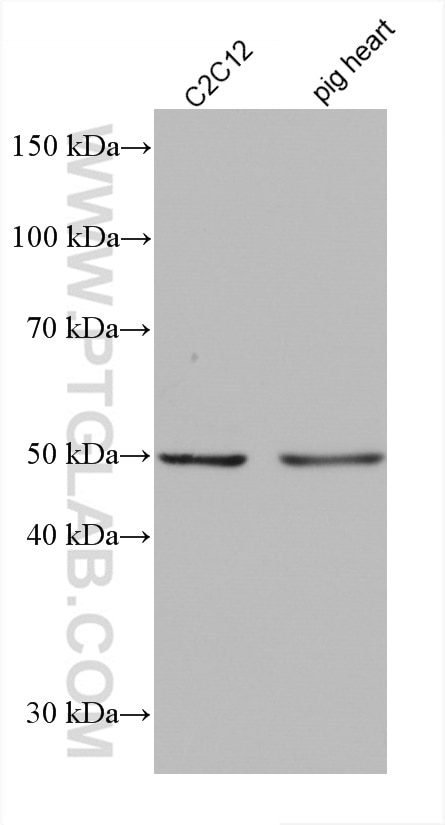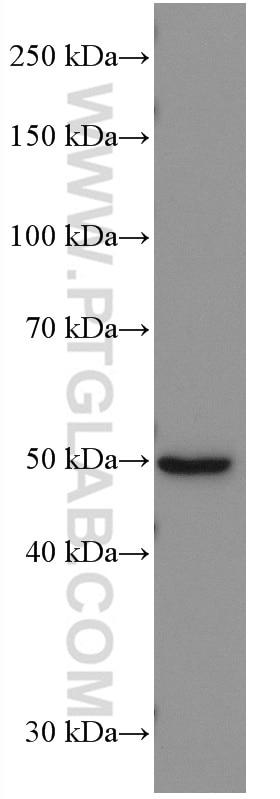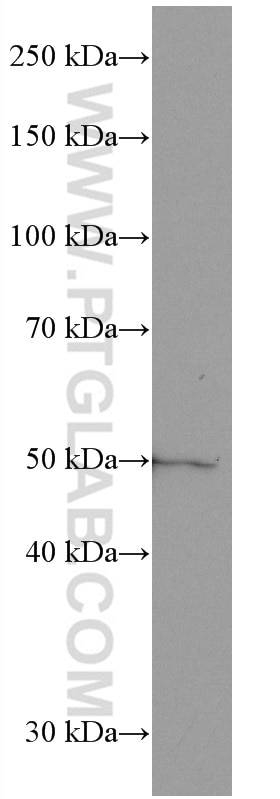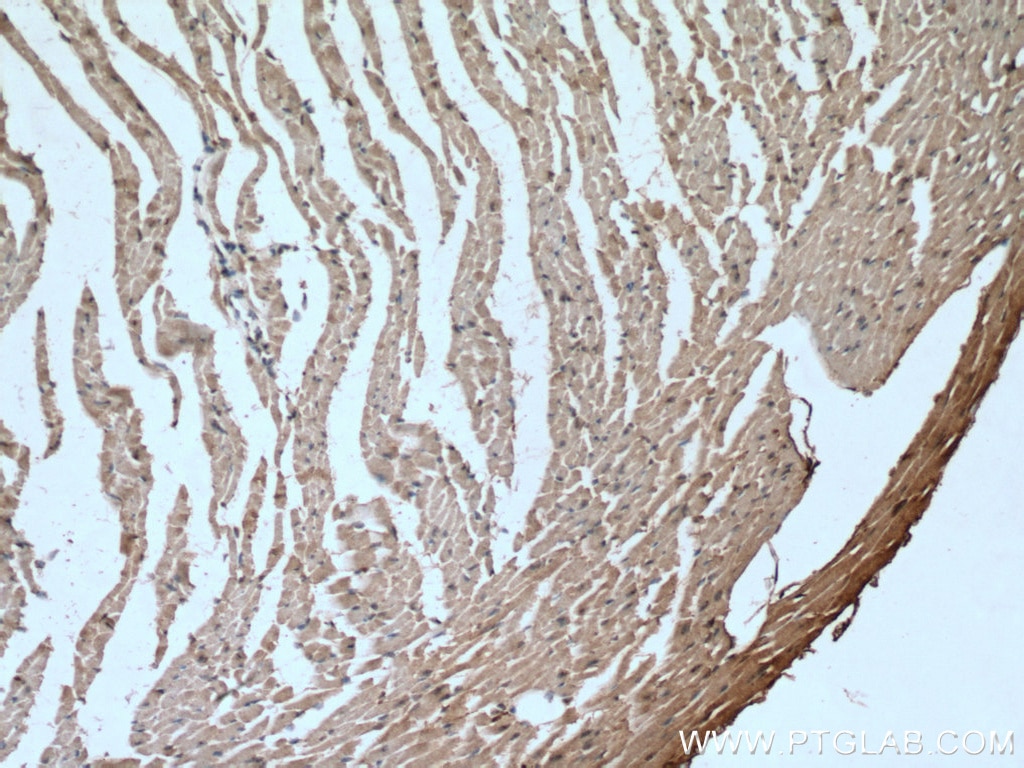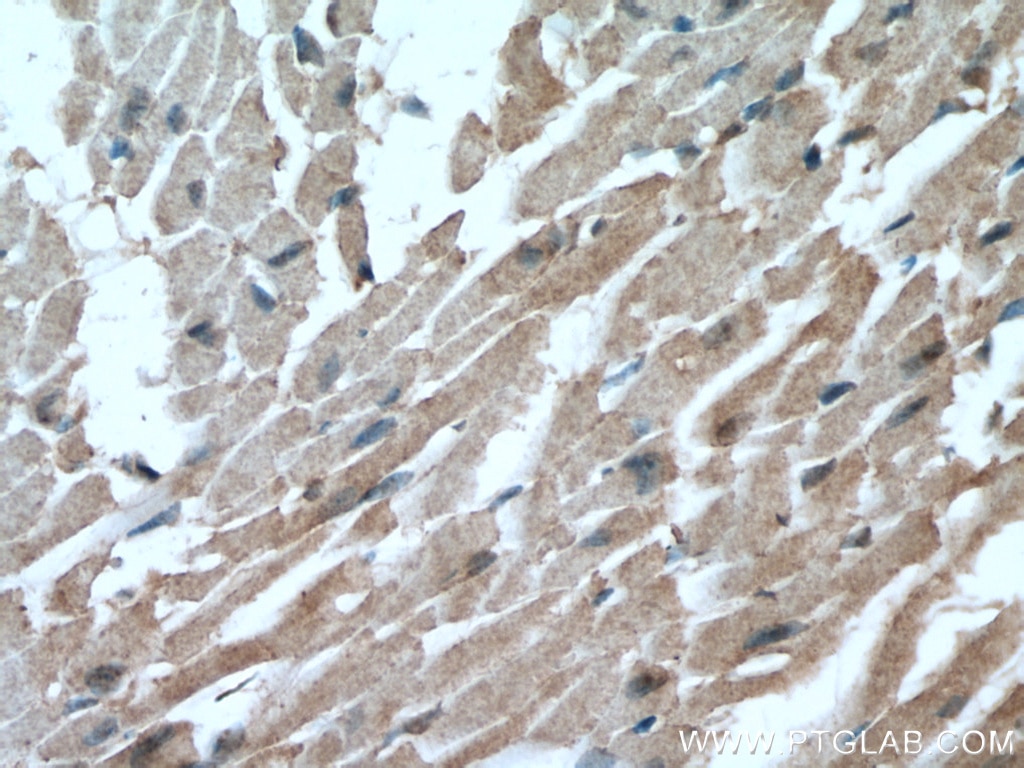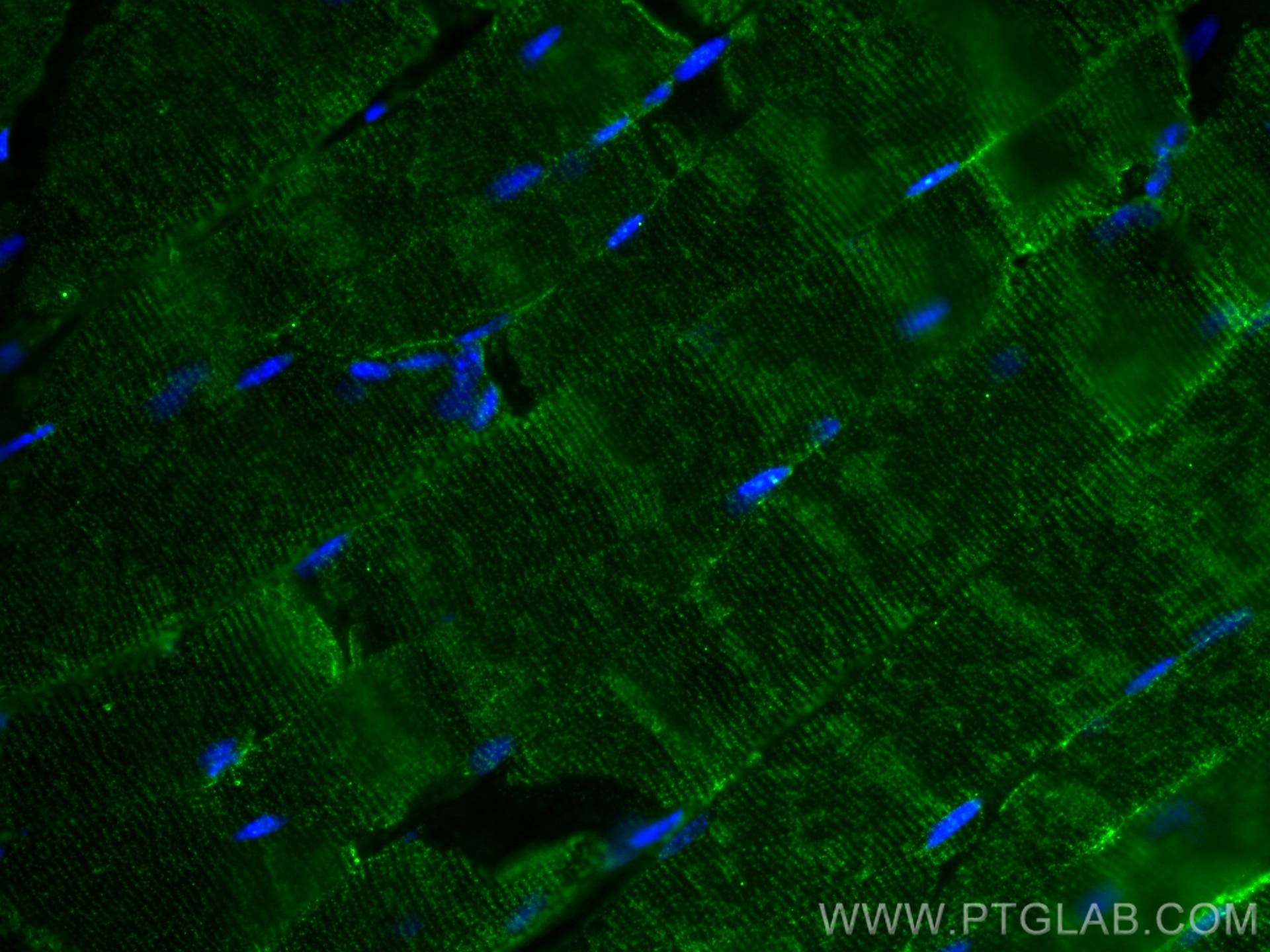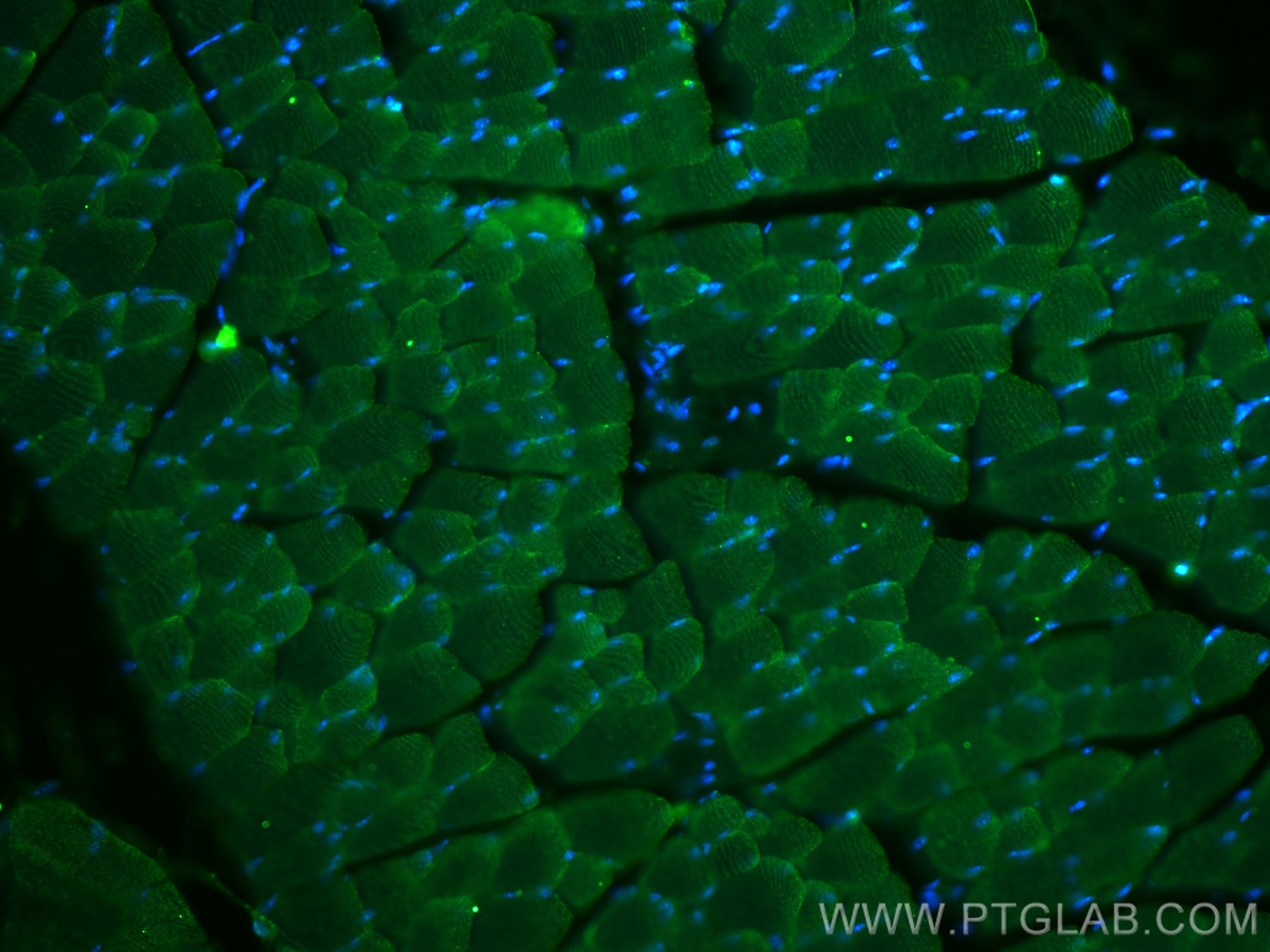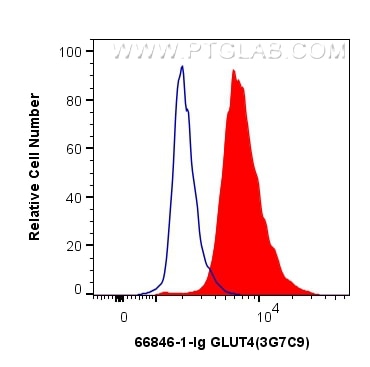Anticorps Monoclonal anti-GLUT4
GLUT4 Monoclonal Antibody for FC, IF, IHC, WB, ELISA
Hôte / Isotype
Mouse / IgG2b
Réactivité testée
Humain, porc, rat, souris et plus (1)
Applications
WB, IHC, IF, FC, ELISA
Conjugaison
Non conjugué
CloneNo.
3G7C9
N° de cat : 66846-1-Ig
Synonymes
Galerie de données de validation
Applications testées
| Résultats positifs en WB | tissu cardiaque de rat, cellules C2C12, tissu adipeux de souris, tissu cardiaque de porc, tissu cardiaque de souris, tissu cardiaque humain, tissu de muscle squelettique de rat, tissu de muscle squelettique de souris, tissu de muscle squelettique humain |
| Résultats positifs en IHC | tissu cardiaque de souris, il est suggéré de démasquer l'antigène avec un tampon de TE buffer pH 9.0; (*) À défaut, 'le démasquage de l'antigène peut être 'effectué avec un tampon citrate pH 6,0. |
| Résultats positifs en IF | tissu de muscle squelettique de souris, |
| Résultats positifs en cytométrie | cellules HEK-293, |
Dilution recommandée
| Application | Dilution |
|---|---|
| Western Blot (WB) | WB : 1:1000-1:3000 |
| Immunohistochimie (IHC) | IHC : 1:50-1:500 |
| Immunofluorescence (IF) | IF : 1:200-1:800 |
| Flow Cytometry (FC) | FC : 0.40 ug per 10^6 cells in a 100 µl suspension |
| It is recommended that this reagent should be titrated in each testing system to obtain optimal results. | |
| Sample-dependent, check data in validation data gallery | |
Applications publiées
| WB | See 68 publications below |
| IHC | See 5 publications below |
| IF | See 7 publications below |
Informations sur le produit
66846-1-Ig cible GLUT4 dans les applications de WB, IHC, IF, FC, ELISA et montre une réactivité avec des échantillons Humain, porc, rat, souris
| Réactivité | Humain, porc, rat, souris |
| Réactivité citée | rat, Humain, porc, souris, Hamster |
| Hôte / Isotype | Mouse / IgG2b |
| Clonalité | Monoclonal |
| Type | Anticorps |
| Immunogène | GLUT4 Protéine recombinante Ag15390 |
| Nom complet | solute carrier family 2 (facilitated glucose transporter), member 4 |
| Masse moléculaire calculée | 509 aa, 55 kDa |
| Poids moléculaire observé | 48-50 kDa |
| Numéro d’acquisition GenBank | BC069615 |
| Symbole du gène | SLC2A4 |
| Identification du gène (NCBI) | 6517 |
| Conjugaison | Non conjugué |
| Forme | Liquide |
| Méthode de purification | Purification par protéine A |
| Tampon de stockage | PBS avec azoture de sodium à 0,02 % et glycérol à 50 % pH 7,3 |
| Conditions de stockage | Stocker à -20°C. Stable pendant un an après l'expédition. L'aliquotage n'est pas nécessaire pour le stockage à -20oC Les 20ul contiennent 0,1% de BSA. |
Informations générales
Glucose transporter 4 (GLUT4), also known as solute carrier family 2, facilitated glucose transporter member 4 (SLC2A4), is a transporter protein regulating glucose transport across cell membranes in an INS-dependent manner.
What is the molecular weight of GLUT4? Is GLUT4 post-translationally modified?
The molecular weight of GLUT4 transporter is 55 kDa. GLUT4 can be N-glycosylated, which is important for its stability and trafficking between the recycling compartment and plasma membrane (PMID: 21757715 and 22545627), and it can also be ubiquitinated and phosphorylated (PMID: 23665900).
What is the subcellular localization of GLUT4?
Glucose transporters, including GLUT4, are multiple-pass integral membrane proteins. GLUT4 is present at the plasma membrane but is also a subject of recycling between plasma membrane and endosomes. The localization of GLUT4 depends on stimulation with INS - in basal conditions GLUT4 is retained intracellularly, while upon INS stimulation it is translocated to the plasma membrane (PMID: 18570632).
What molecules can be transported by GLUT4?
Although the main substrate of GLUT4 transport is glucose, it can also transport glucosamine.
What is the tissue expression pattern of GLUT4?
GLUT4 is expressed in white and brown adipose tissue and in muscle and heart cells, where it is the main glucose transporter responsible for peripheral glucose uptake in response to INS.
Which cell lines can be used to study insulin-dependent GLUT4 protein translocation in glucose uptake assays?
Fat and muscle cells are primarily used in glucose uptake assays because they physiologically respond to INS(PMID: 26646194). The most commonly used cell lines are 3T3-L1 cells (murine pre-adipose fibroblasts), L6 cells (rat myoblasts), and C2C12 cells (murine myoblasts).
Protocole
| Product Specific Protocols | |
|---|---|
| WB protocol for GLUT4 antibody 66846-1-Ig | Download protocol |
| IHC protocol for GLUT4 antibody 66846-1-Ig | Download protocol |
| IF protocol for GLUT4 antibody 66846-1-Ig | Download protocol |
| FC protocol for GLUT4 antibody 66846-1-Ig | Download protocol |
| Standard Protocols | |
|---|---|
| Click here to view our Standard Protocols |
Publications
| Species | Application | Title |
|---|---|---|
Cell Metab Di-methylation of CD147-K234 Promotes the Progression of NSCLC by Enhancing Lactate Export. | ||
Adv Sci (Weinh) NAT10/ac4C/FOXP1 Promotes Malignant Progression and Facilitates Immunosuppression by Reprogramming Glycolytic Metabolism in Cervical Cancer | ||
J Pineal Res Melatonin increases susceptibility to atrial fibrillation in obesity via Akt signaling impairment in response to lipid overload | ||
Oncogene Programmed death ligand 1 promotes lymph node metastasis and glucose metabolism in cervical cancer by activating integrin β4/SNAI1/SIRT3 signaling pathway. | ||
Oxid Med Cell Longev Total Sesquiterpene Glycosides from Loquat Leaves Ameliorate HFD-Induced Insulin Resistance by Modulating IRS-1/GLUT4, TRPV1, and SIRT6/Nrf2 Signaling Pathways. | ||
Oxid Med Cell Longev Protective Effect of Jiang Tang Xiao Ke Granules against Skeletal Muscle IR via Activation of the AMPK/SIRT1/PGC-1α Signaling Pathway. |
Avis
The reviews below have been submitted by verified Proteintech customers who received an incentive forproviding their feedback.
FH Hua (Verified Customer) (09-07-2023) | Good antibody for WB. Signal is strong, and the background is clean. It seems not work with GLUT4 of mouse origin.
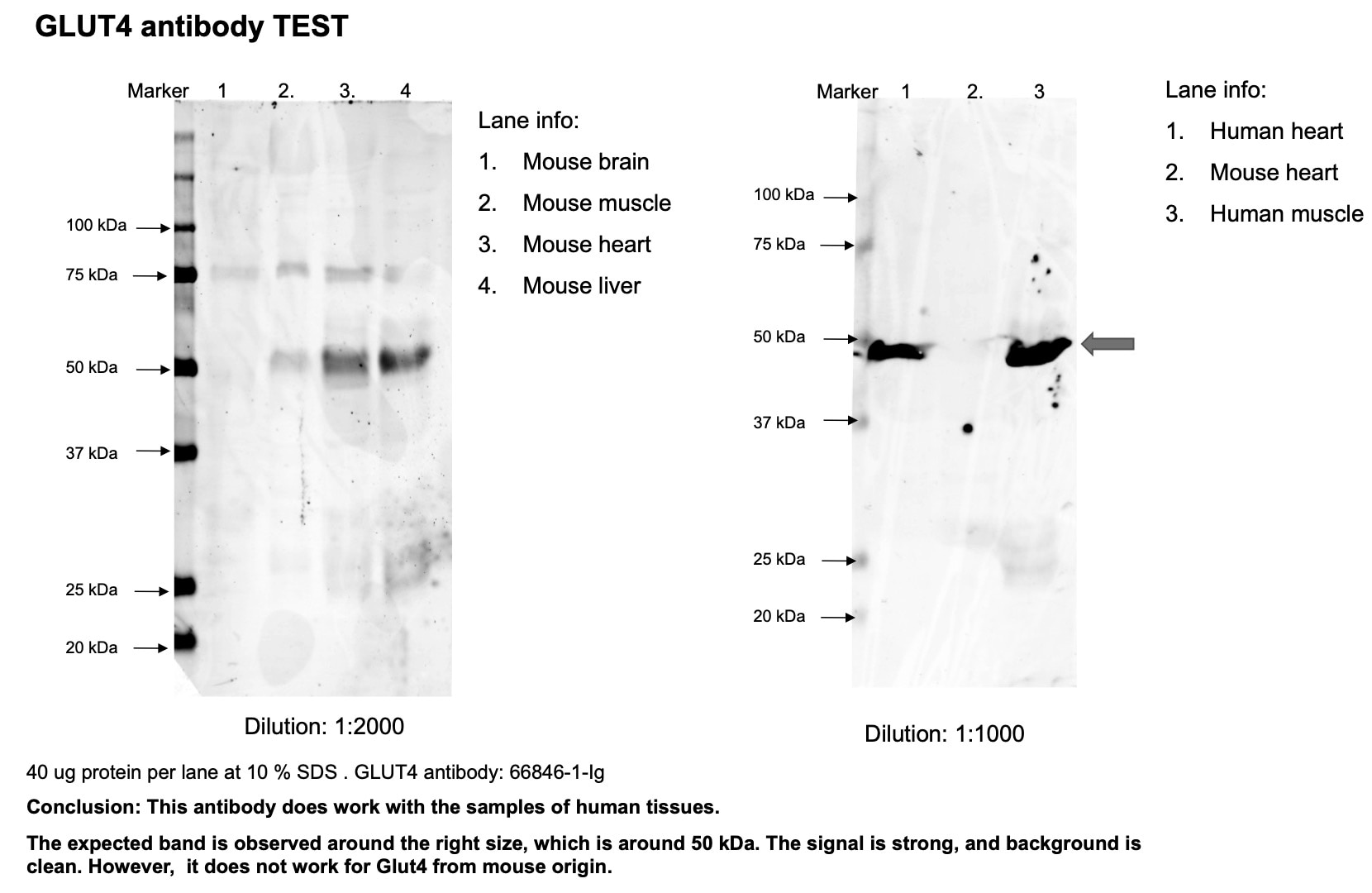 |
